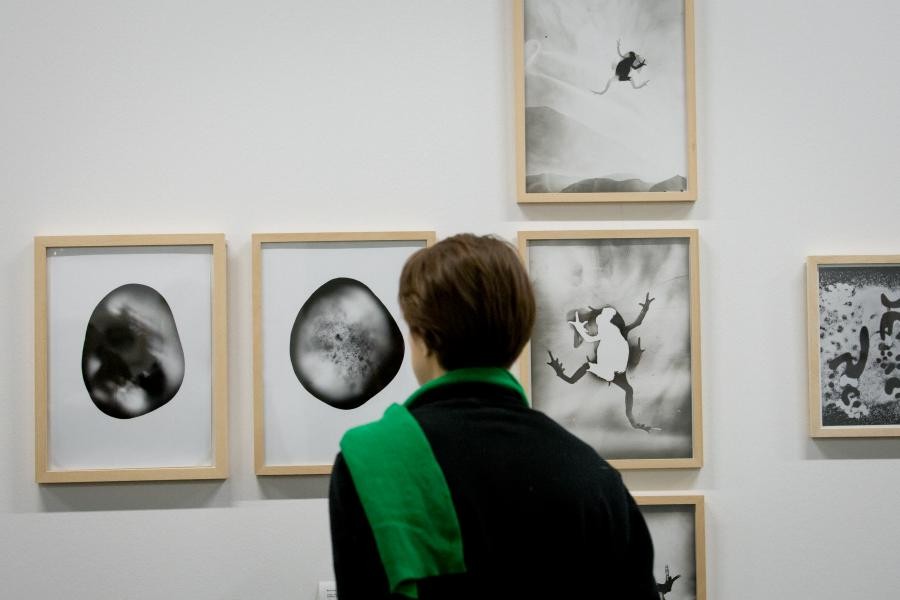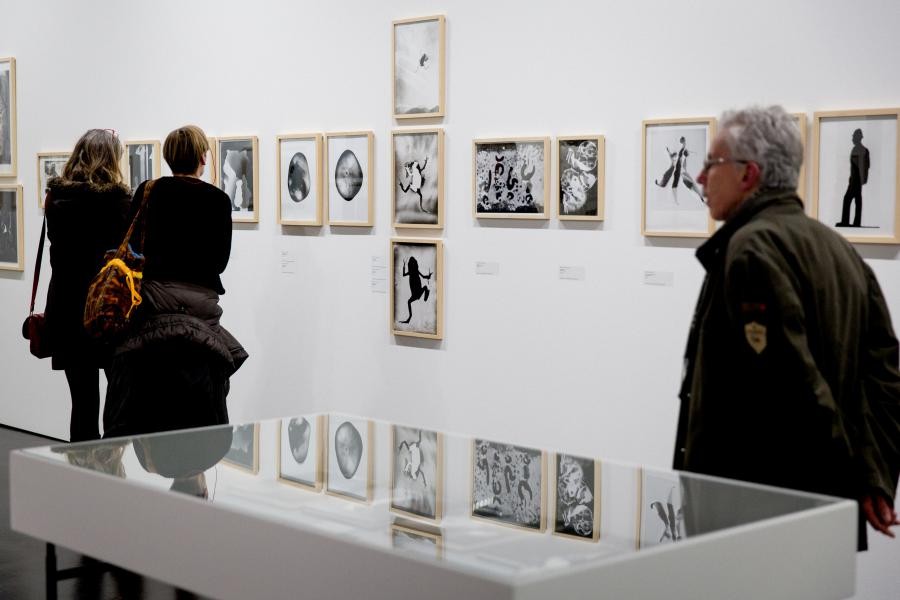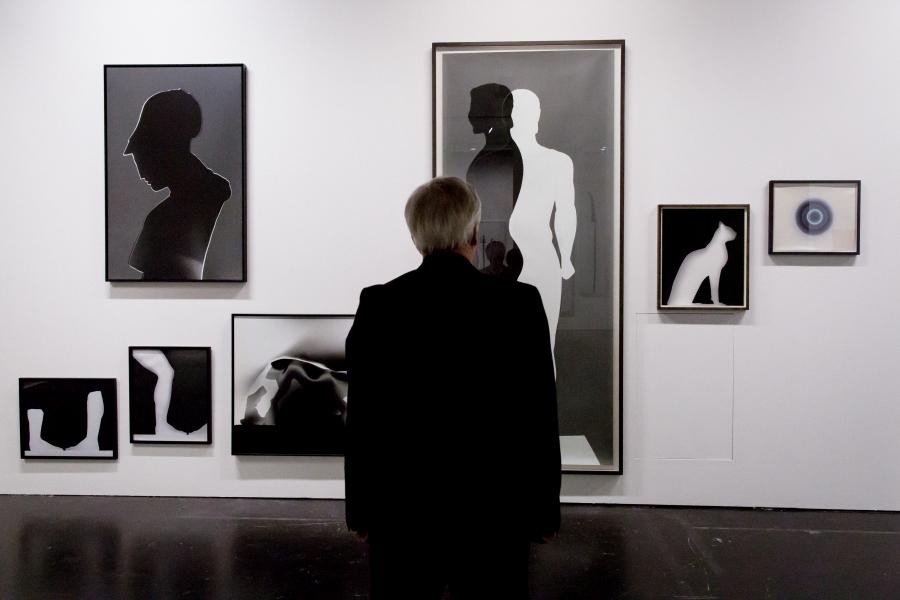Floris Neusüss, Renate Heyne
11 Dec 2016 - 05 Mar 2017

Zweischaliges Hyperboloid | mathematisches Modell | Mathematisches Institut der Universität Halle | Fotogramm, 60 x 50 cm, 2004 / © ZKM | Center for Art and Media, photo: Floris Neusüssclose
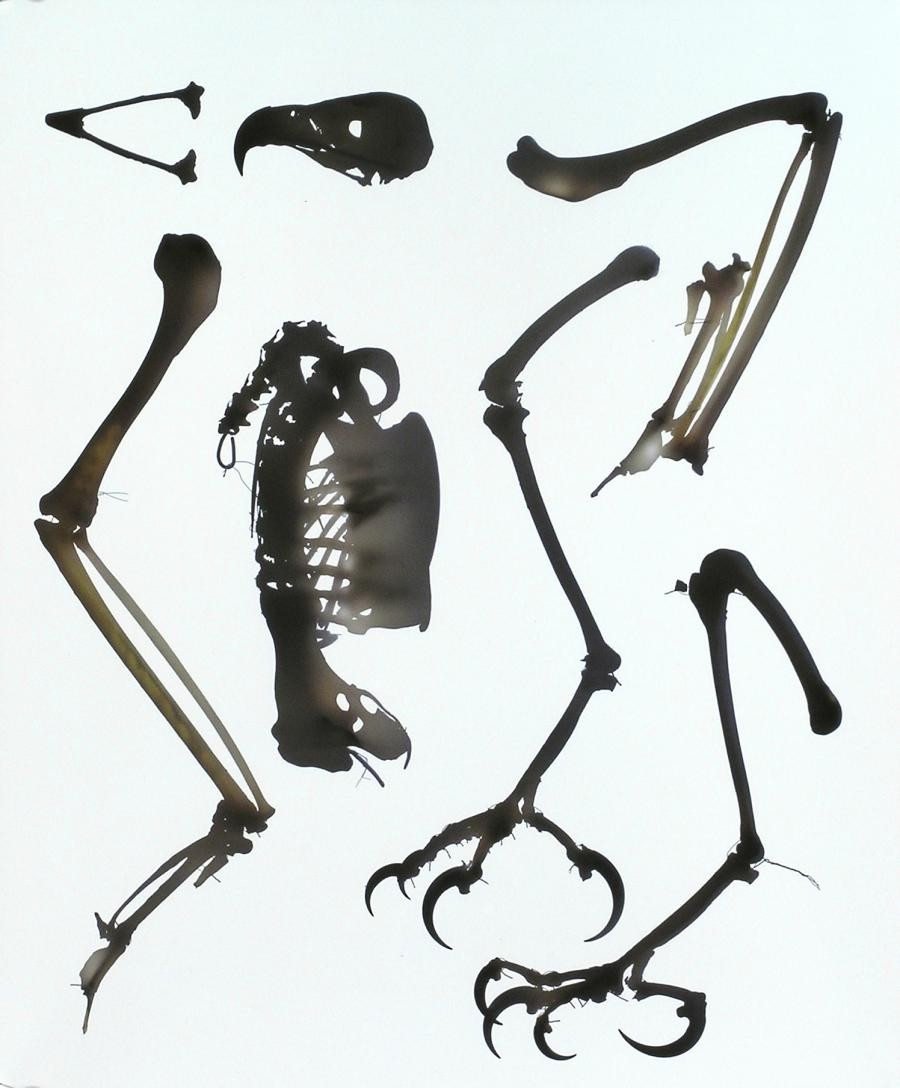
Steinadlergerippe Aquila chrysaetos | Musée d’histoire naturelle, Fribourg | Fotogramm, 60 x 50 cm, 2006 / © ZKM | Center for Art and Media, photo: Floris Neusüssclose
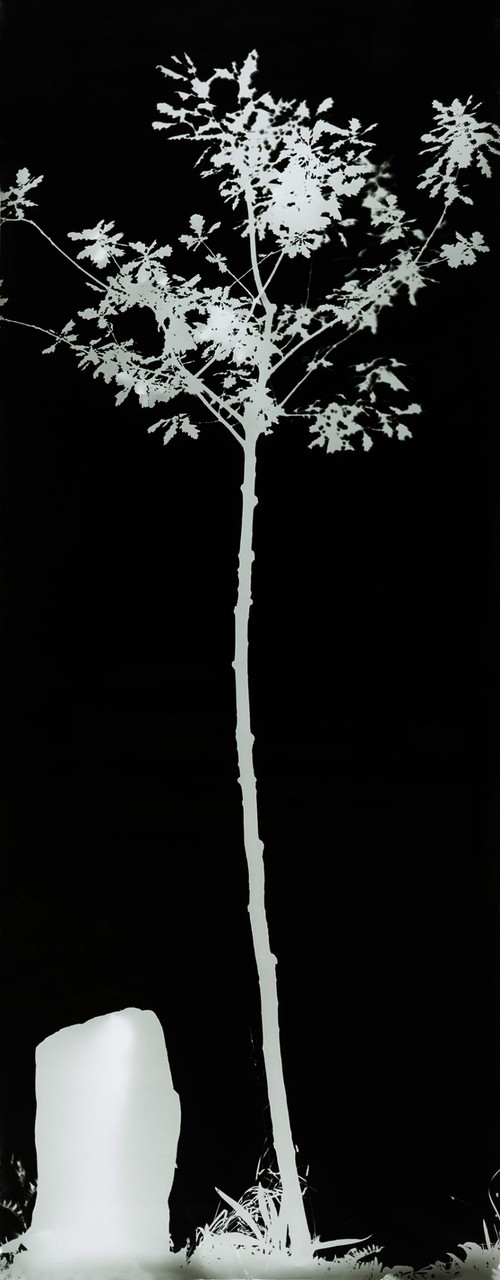
Beuysbaum | Kassel, Pferdemarkt | Fotogramm, 127 x 325 cm, 2015 / © ZKM | Center for Art and Media, photo: Floris Neusüss

Apoll von Tenea (kleiner Kouros) | Korinth, 560 / 550 b.c. | Glyptothek München | Fotogramm, 195 x 75,5 cm, 2004 / © ZKM | Center for Art and Media, photo: Floris Neusüss
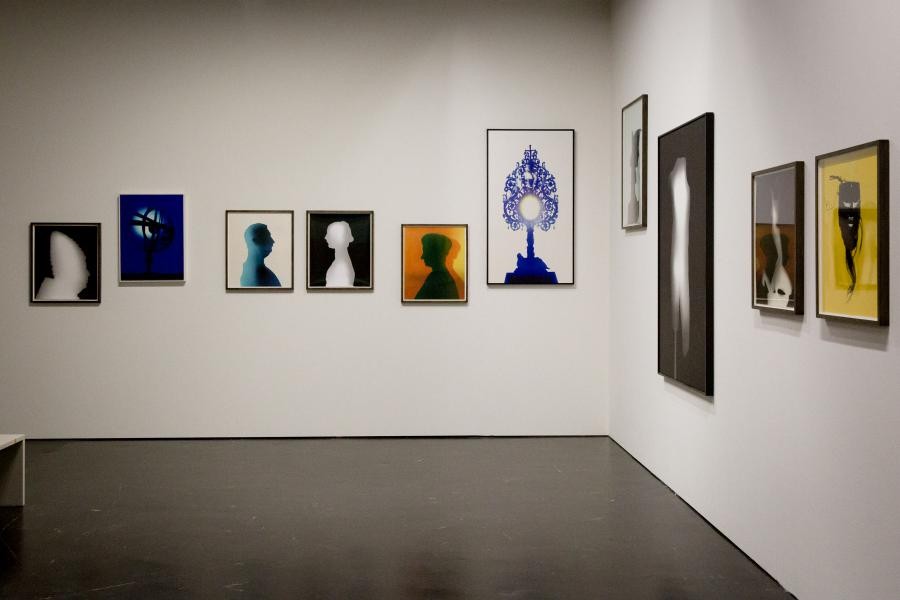
Exhibition View »Leibniz' Storehouse« / © ZKM | Center for Art and Media, Photo: Felix Grünschloßclose
FLORIS NEUSÜSS, RENATE HEYNE
Leibniz’ Storehouse
Collections in Photograms
11 December 2016 – 5 March 2017
Description
What if Leibniz, the bustling polymath of the Early Enlightenment, had set himself the goal of imparting his knowledge to the general public in the clearest and most practical way possible, using natural produce and artefacts? What would the stockroom, in which he stored such items for subsequent teaching, look like? Which scientific instruments, technical achievements, everyday items, souvenirs from faraway countries, artwork and trivia would be contained in this store? Floris Neusüss and Renate Heyne answer these questions in their photogram exhibition which is designed as an intellectual game.
The exhibition »Leibniz’ Storehouse« is an imaginary walk through the fictitious stockroom, where the items are not always carefully sorted, but often have been simply put down. However, the exhibits are not actually artefacts. Instead, they are photograms of them, produced by the two artists in various museums since 2000. As part of the »Leibniz’ Storehouse« exhibition, the extensive photogram archive of Floris Neusüss and Renate Heyne is being presented for the first time. It illustrates the photogram in its medial and historic dimension with its historic and contemporary works and documents.
Photograms
The photogram has had a great appeal to painters, filmmakers and, of course, photographers since the 1920s – as an experimental image between photography and bodies or sculpture. If Roland Barthes wrote about the indirect form of photography: »From a real object, which once was, rays are emitted, which reach me where I am here« (»Camera Lucida«, 1980), then in contrast, the directly tangible simultaneity of the present and reproduced item forms the basis of the photogram. As camera-less sculptures, photograms are created through direct exposure in a contact procedure of objects on photographical material. The photogram image oscillates between palpably authentic proximity and distancing absence. You could say: Between presence and absence, between exposure and concealment.
An approx. 230-page publication is being published by the Hatje Cantz Verlag on the exhibition including texts by Martin Kemp and Horst Bredekamp.
Credits
Erec Gellautz (Project management)
Co-operation partner
Art Mentor Foundation Lucerne
Leibniz’ Storehouse
Collections in Photograms
11 December 2016 – 5 March 2017
Description
What if Leibniz, the bustling polymath of the Early Enlightenment, had set himself the goal of imparting his knowledge to the general public in the clearest and most practical way possible, using natural produce and artefacts? What would the stockroom, in which he stored such items for subsequent teaching, look like? Which scientific instruments, technical achievements, everyday items, souvenirs from faraway countries, artwork and trivia would be contained in this store? Floris Neusüss and Renate Heyne answer these questions in their photogram exhibition which is designed as an intellectual game.
The exhibition »Leibniz’ Storehouse« is an imaginary walk through the fictitious stockroom, where the items are not always carefully sorted, but often have been simply put down. However, the exhibits are not actually artefacts. Instead, they are photograms of them, produced by the two artists in various museums since 2000. As part of the »Leibniz’ Storehouse« exhibition, the extensive photogram archive of Floris Neusüss and Renate Heyne is being presented for the first time. It illustrates the photogram in its medial and historic dimension with its historic and contemporary works and documents.
Photograms
The photogram has had a great appeal to painters, filmmakers and, of course, photographers since the 1920s – as an experimental image between photography and bodies or sculpture. If Roland Barthes wrote about the indirect form of photography: »From a real object, which once was, rays are emitted, which reach me where I am here« (»Camera Lucida«, 1980), then in contrast, the directly tangible simultaneity of the present and reproduced item forms the basis of the photogram. As camera-less sculptures, photograms are created through direct exposure in a contact procedure of objects on photographical material. The photogram image oscillates between palpably authentic proximity and distancing absence. You could say: Between presence and absence, between exposure and concealment.
An approx. 230-page publication is being published by the Hatje Cantz Verlag on the exhibition including texts by Martin Kemp and Horst Bredekamp.
Credits
Erec Gellautz (Project management)
Co-operation partner
Art Mentor Foundation Lucerne

